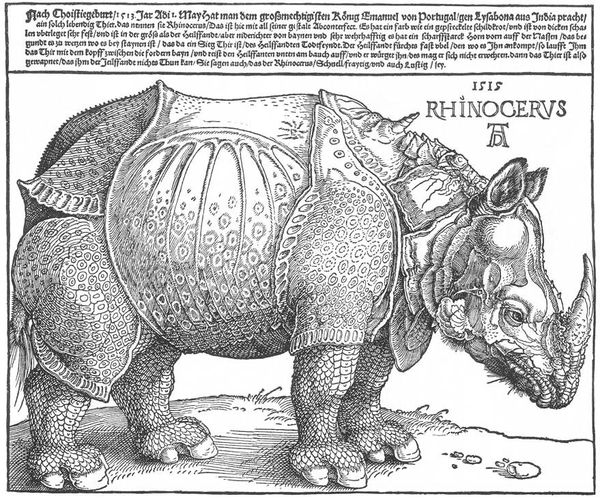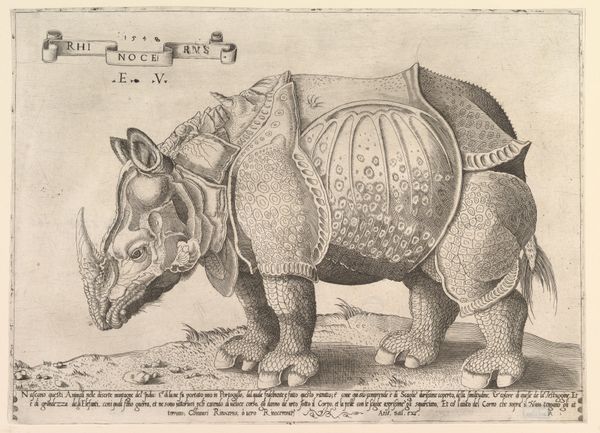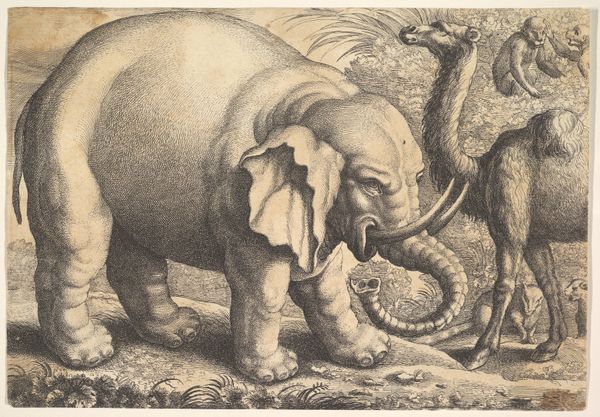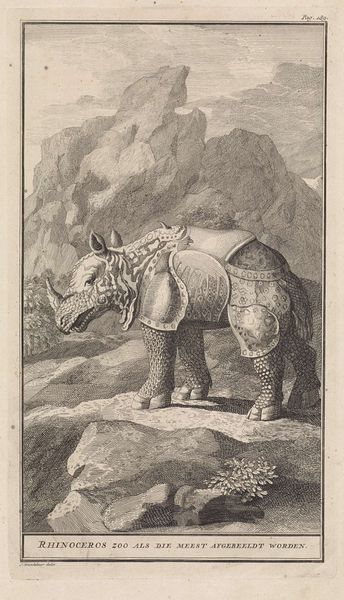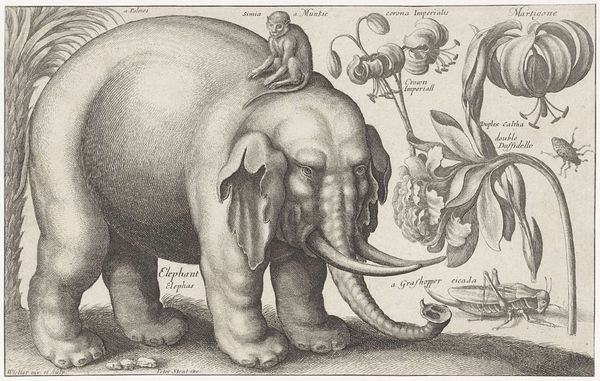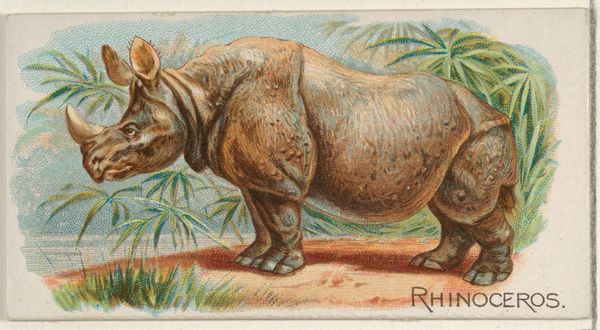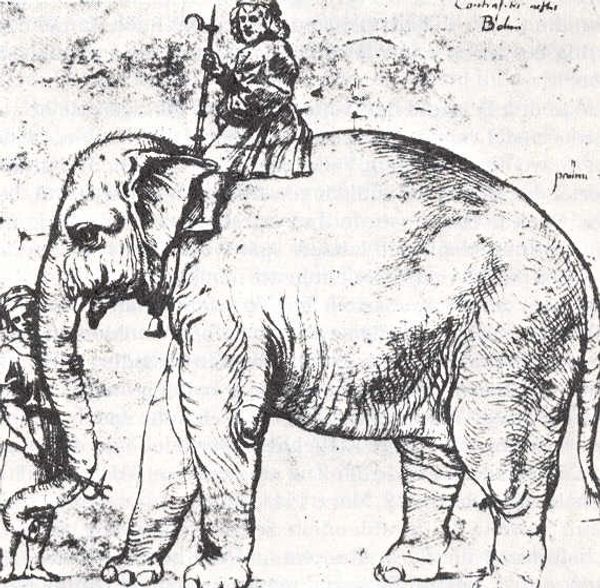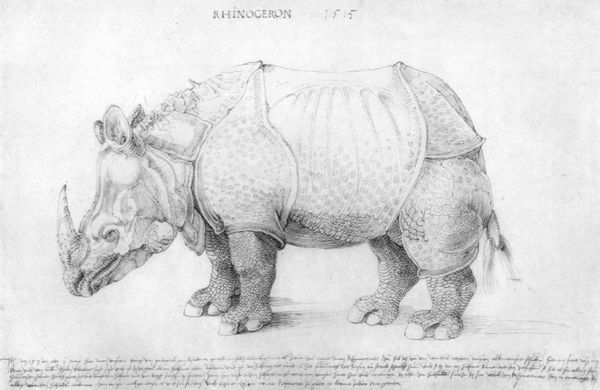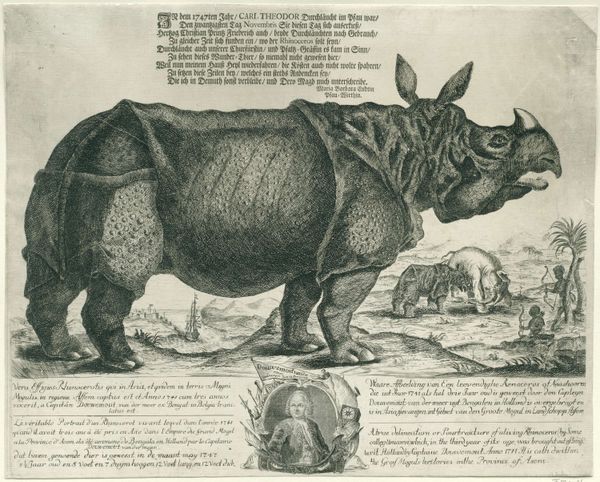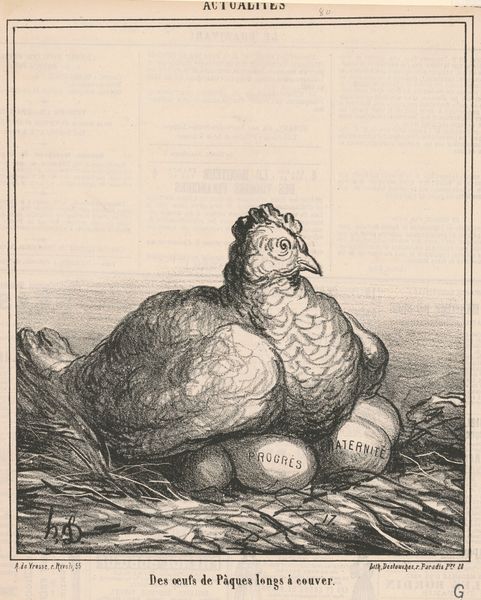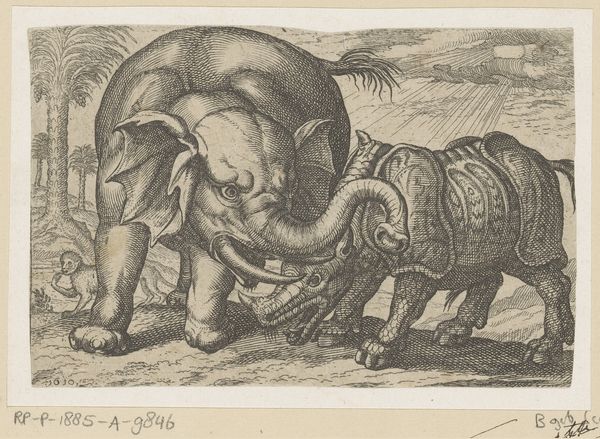
drawing, print, paper, ink, woodcut, engraving
#
drawing
#
animal
# print
#
figuration
#
paper
#
ink
#
woodcut
#
line
#
northern-renaissance
#
engraving
#
realism
Dimensions: height 212 mm, width 299 mm
Copyright: Rijks Museum: Open Domain
Editor: Here we have Albrecht Durer's "Rhinoceros," a woodcut from 1515. The detail is incredible, especially considering Durer likely never saw the animal himself. It looks almost...armored. How should we interpret this work? Curator: This image speaks volumes about the power of representation and the construction of knowledge in the 16th century. Durer's rhinoceros wasn’t based on direct observation, but rather on a written description and a sketch. It's a mediated reality. Editor: So, it’s not really about a rhinoceros then? Curator: It's about much more. Think about Europe's relationship to the 'exotic' Other. The rhinoceros becomes a symbol, distorted and re-imagined to fit a European worldview. What does that say about power dynamics and the way we perceive the unknown? Consider how this image, despite its inaccuracies, became the definitive image of a rhino for centuries. Editor: That's unsettling. So, the image perpetuated a falsehood, reinforcing a skewed perspective? Curator: Precisely! This distortion reflects colonial attitudes and the appropriation of knowledge. The 'armored' look can even be interpreted as a symbol of European dominance projected onto the natural world. How does the work comment on cultural exchange and its inherent biases? Editor: Wow, I never thought about it that way. It’s a powerful, yet problematic, image, showcasing both artistic skill and the dangers of secondhand knowledge. Curator: Exactly! Durer's "Rhinoceros" urges us to question representation, especially when dealing with different cultures. Art becomes a lens through which to examine historical biases. Editor: Thanks! That was eye-opening; I’ll definitely approach historical images with a more critical perspective now.
Comments
No comments
Be the first to comment and join the conversation on the ultimate creative platform.

